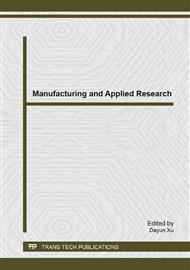p.423
p.428
p.433
p.439
p.444
p.450
p.455
p.463
p.467
Formulation of a Polynomial Stochastic Fatigue Crack Growth Model
Abstract:
The study is focused on the formulation of a proposed polynomial stochastic fatigue crack growth model. Assuming the fatigue crack growth rate equal to a deterministic polynomial function in terms of fatigue crack size multiplied by a stationary lognormal random factor accounting for the statistical scatter of the fatigue crack growth, the analytical solutions of fatigue crack growth function and median crack growth function in term of model parameters were derived. Two extreme cases, lognormal random variable and lognormal white noise, of the proposed model were also investigated, and the analytical solutions of the distribution function of the random crack size at any service time and distribution function of random time to reach a specified crack size were obtained.
Info:
Periodical:
Pages:
467-471
Citation:
Online since:
March 2014
Authors:
Keywords:
Price:
Сopyright:
© 2014 Trans Tech Publications Ltd. All Rights Reserved
Share:
Citation:


